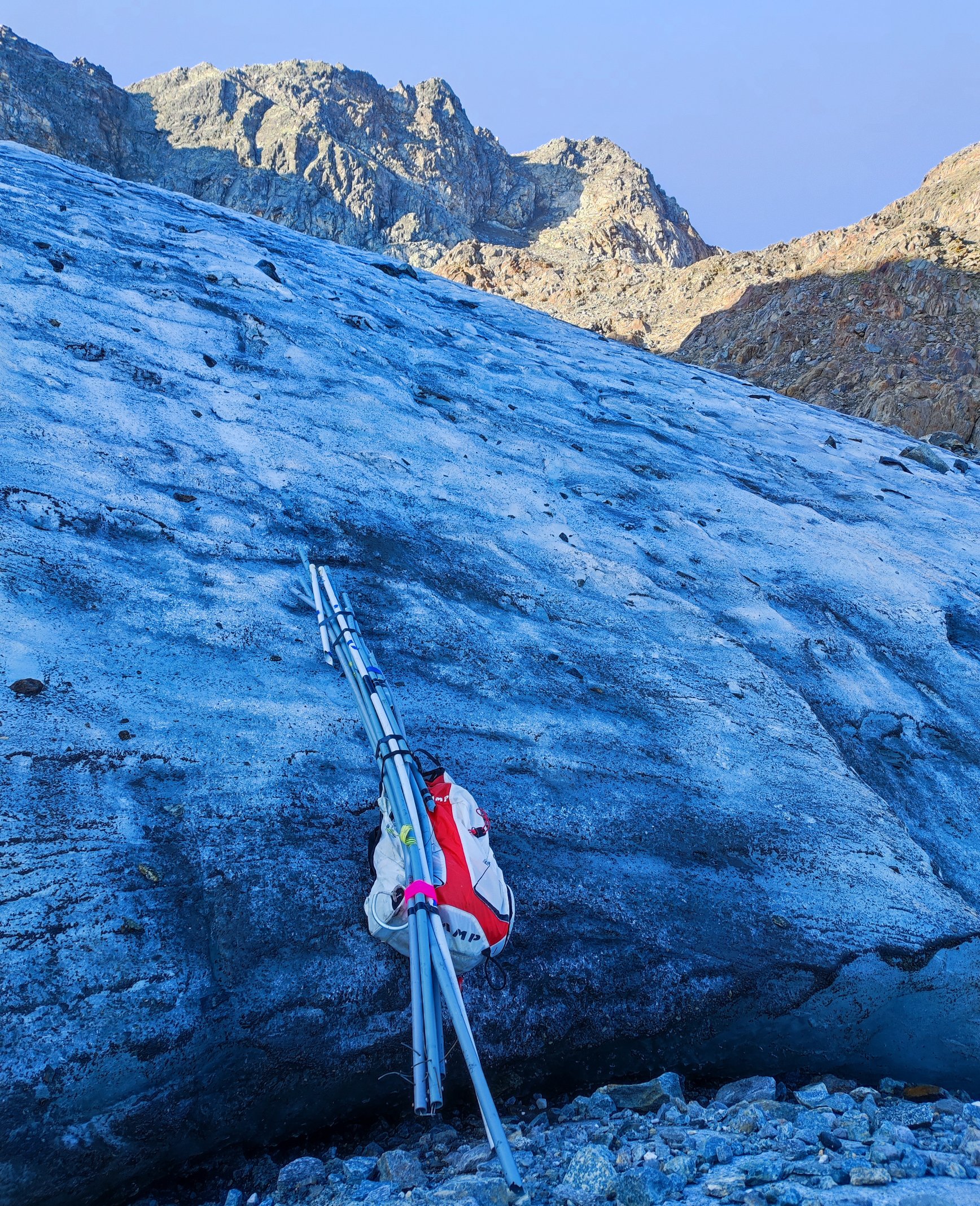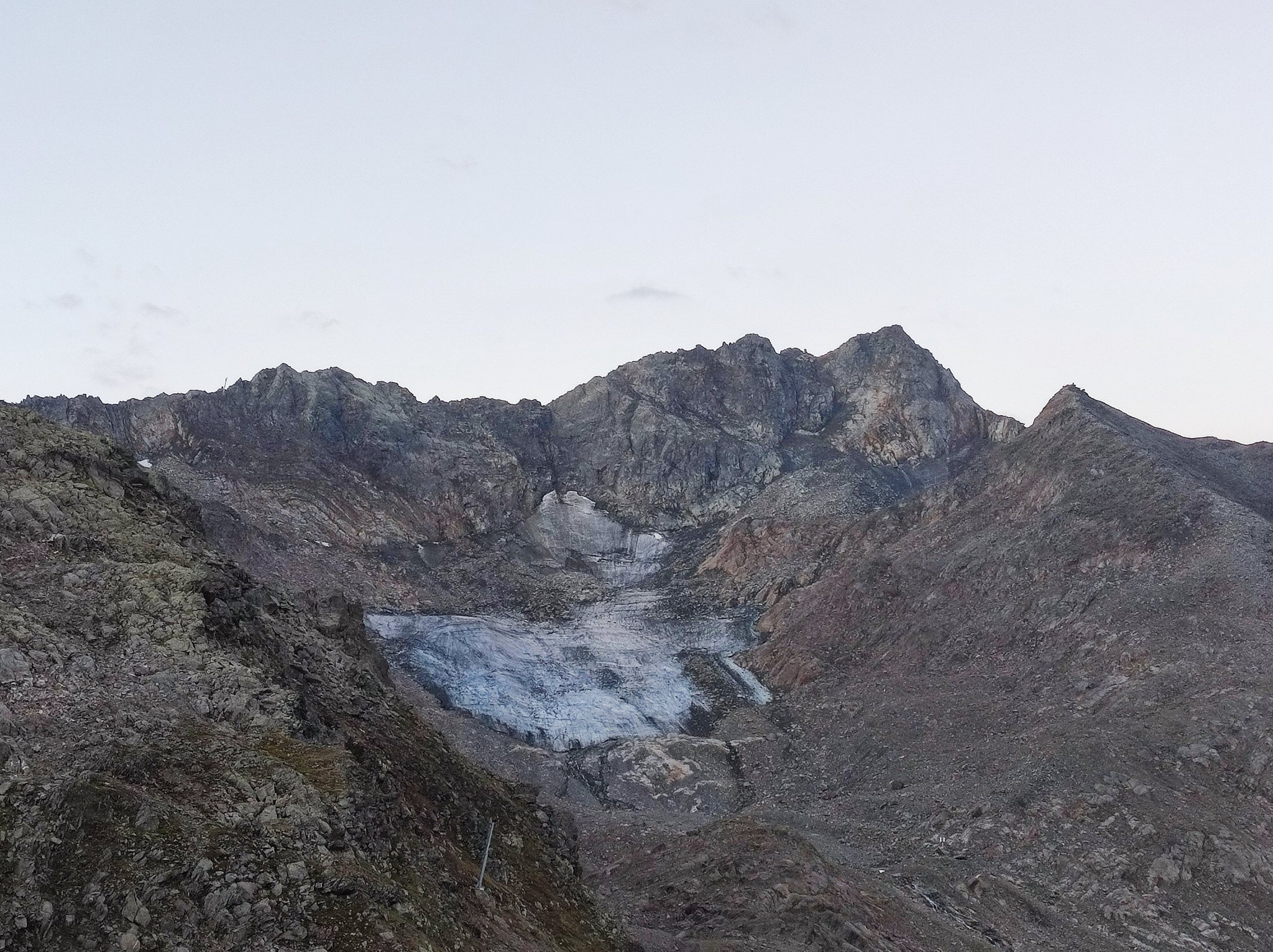Disappearing Alpine Glaciers a Grim Warning to the Arctic
In the past 20 years Swiss glaciers have been shrinking rapidly, with some gone forever. Dr. Matthias Huss says this provides an insight into what can happen to the Arctic unless emissions are drastically reduced.

Dr Matthias Huss, the head of the Swiss glacier monitoring organization GLAMOS, says that climate change has caused glaciers in the Swiss Alps to shrink considerably over the past 20 years, with some disappearing entirely. He claims this development provides an insight into what can happen in the Arctic unless emission levels are drastically reduced.
Recently, his organization stopped monitoring the small St Annafirn glacier, as for all intents and purposes it has disappeared.
“The last 20 years in Switzerland were characterized by very strong ice losses, without interruption. We have not seen a single year in which glaciers have gained mass,” says Huss. “Overall, Swiss glaciers have lost more than a third of their volume since the year 2000. They have thus strongly retreated. The ice is also darker than before and some small glaciers have completely disappeared.”

According to Huss, all climate scenarios indicate that this trend will continue in the coming decades and that even if atmospheric warming were to stop immediately alpine glaciers would still lose about half of their present volume.
Studying glaciers is an important part of climate studies as they provide an invaluable insight into the changes the planet is currently undergoing.
“Glaciers are sensitive indicators of climate change. They integrate long-term changes in temperature and precipitation and provide important insights into meteorology in mountain ranges or remote polar regions where direct observations are sparse,” says Huss. “Glaciers are also very important regarding their contribution of water to large streams, as well as sea-level rise. In order to better understand and project these phenomena, the monitoring of glaciers is necessary.”
Glaciers in the Arctic respond to a warming climate in the same way glaciers in Switzerland do, but easier access and smaller magnitude of the latter means changes can more readily be observed. This, Huss says, represents an opportunity to better study and understand Arctic glaciers.

“Glaciers in Arctic regions are much bigger, they hold almost all freshwater stored in glaciers and show a stronger lag regarding their reaction to the warming,” says Huss. “Monitoring approaches and mathematical models developed for glaciers in the easily accessible Alps may thus represent an opportunity to better study and understand Arctic glaciers.”
The future of glaciers in the Arctic is very grim if emissions are not strongly reduced. For the Alps the picture is even bleaker with the most pessimistic predictions indicating that they will disappear completely by the end of the century.
“Model results indicate that almost all glaciers of the Arctic might disappear in the long term,” says Huss. “If emissions are reduced to zero in the next few decades, a substantial part of the glacier ice in the Arctic might still be saved. So, in contrast to the Alps, there is still a wide range of actions that can be taken regarding the Arctic glaciers.”
It is hard to picture an Arctic completely devoid of glaciers, but with an ever warming climate, it might be a thought we need to get used to.
4 years of retreat at the terminus of Rhone #Glacier. Just 4 years!!
Do you see how the ice has dramatically thinned? The glacier now shows signs of disintegration.
The artificial coverage for maintaining a touristic ice cave did not stop the loss
Source: @VAW_glaciology webcam pic.twitter.com/F3TTs6gtPS— Matthias Huss (@matthias_huss) August 24, 2023